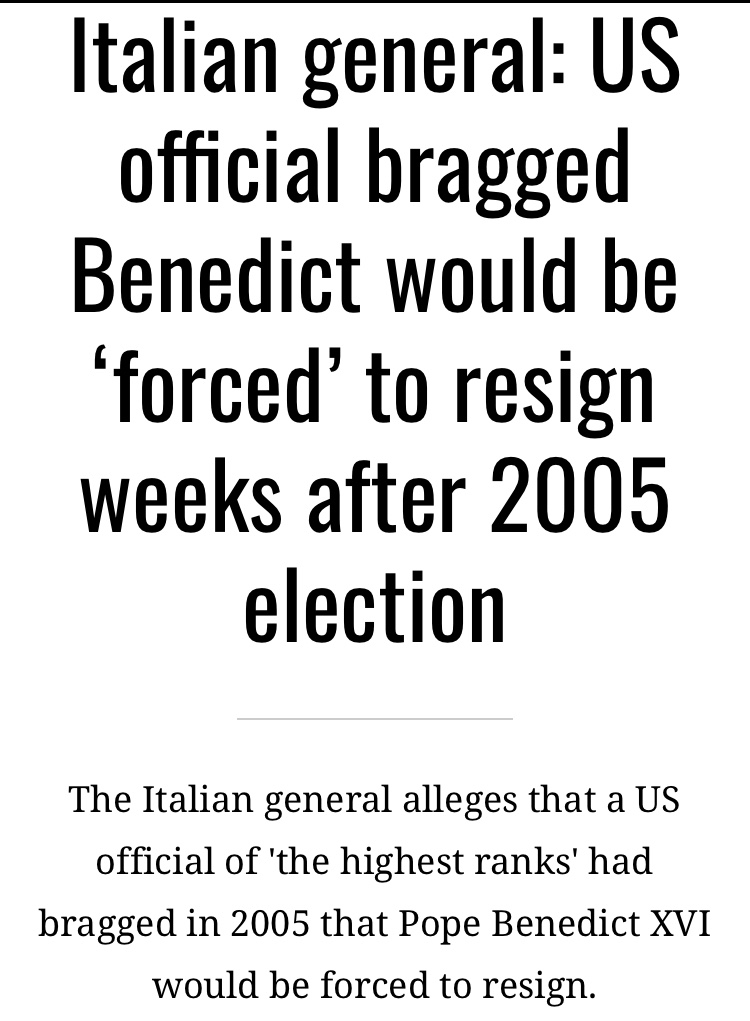The Magi: “You are patrons of all late-comers, of all who have had a tedious journey to make to the truth…”
Over the transom from a longtime reader, this is a quote from Evelyn Waugh in his novelization of the life of St. Helena, the mother of Constantine, who went to Jerusalem, found the True Cross of Christ, and brought it and other relics of The Passion back to Rome. It is “Helena”, and NOT “Brideshead Revisited” that is Waugh’s masterpiece.
This beautiful passage applies perfectly to those people, both simple and grand, lettered and unlettered, who in these days of the Bergoglian and now Prevostian Antipapacy and ascendancy of the Antichurch, are making “that tedious journey to the Truth.”
Let us pray that all of those people of good will who still labor and suffer under the misapprehension that Jorge Bergoglio ever was or Robert “FtR” Prevost is the Vicar of Christ, have… an epiphany.
A blessed Epiphanytide to one and all.
Helena perhaps… apprehended that her fame, like theirs, would live in one historic act of devotion; that she too had emerged from a kind of ‘ουτοπία’ [Utopia] or nameless realm and would vanish like them in the sinking nursery fire-light among the picture-books and the day’s toys.
“Like me,” she said to the Magi, “you were late in coming. The shepherds were here long before; even the cattle. They had joined the chorus of angels before you were on your way. For you the primordial discipline of the heavens was relaxed and a new defiant light blazed among the disconcerted stars.
“How laboriously you came, taking sights and calculations, where the shepherds had run barefoot! How odd you looked on the road, attended by what outlandish liveries, laden with such strange gifts!
“You came at length to the final stage of your pilgrimage and the great star stood still above you. What did you do? You stopped to call on King Herod. Deadly exchange of compliments in which there began that unended war of mobs and magistrates against the innocent!
“Yet you came, and were not turned away. You too found room at the manger. Your gifts were not needed, but they were accepted and put carefully by, for they were brought with love. In that new order of charity that had just come to life there was room for you too.
“You are my especial patrons,” said Helena, “and patrons of all late-comers, of all who have had a tedious journey to make to the truth, of all who are confused with knowledge and speculation, of all who through politeness make themselves partners in guilt, of all who stand in danger by reason of their talents.
“Dear cousins, pray for me,” said Helena, and “for His sake who did not reject your curious gifts, pray always for the learned, the oblique, the delicate. Let them not be quite forgotten at the Throne of God when the simple come into their kingdom.”

Toldya: Almost all “Jews” today are atheists. Atheists who claim divine rights. And no one calls this out, because everyone is too terrified to do so. #Noticing
This guy is a musical theatre actor, currently fornicating with the Luciferian anorexic singer Ariana Grande. My reportage on Grande’s pornographic musical oeuvre aimed squarely at little girls is HERE. Extreme content warning.
The Holy Catholic Church, the New and Only Israel on earth, prays on Good Friday for “the perfidious Jews.”
Per = without
Fide = faith
They are faithless atheists who despise people who aren’t faithless as they are. They DESPISE people who believe… in anything. This truly evil mindset of despising faith qua faith is what has almost totally infiltrated and infected The Catholic Church today. The vast majority of prelates today are not just sodomites, but atheists, and hate anyone who “actually believes any of that Catholic bullshit.” They don’t believe any of it, like Antipope Bergoglio, and now like Antipope Robert “FtR” Prevost, and believe their mission is to purge all belief and faith in God from the planet and replace it with the worship of the Self. The actual name for this is luciferianism, but it goes by “Talmudic/Rabbinic Judaism”, “Freemasonry”, “LGBTQ”, “secular humanism” and the Bergoglian-Prevostian Antichurch. But it’s all, ultimately Luciferian.
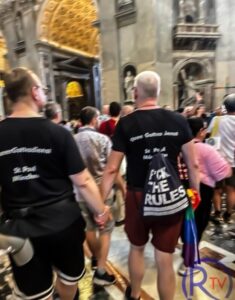

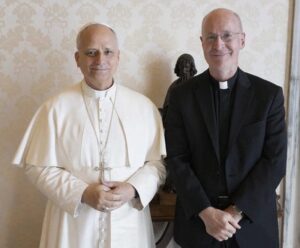
When people tell you who they are, and casually confess their sins, lies, frauds and crimes to you, believe them.
Say His Name, Say His Name
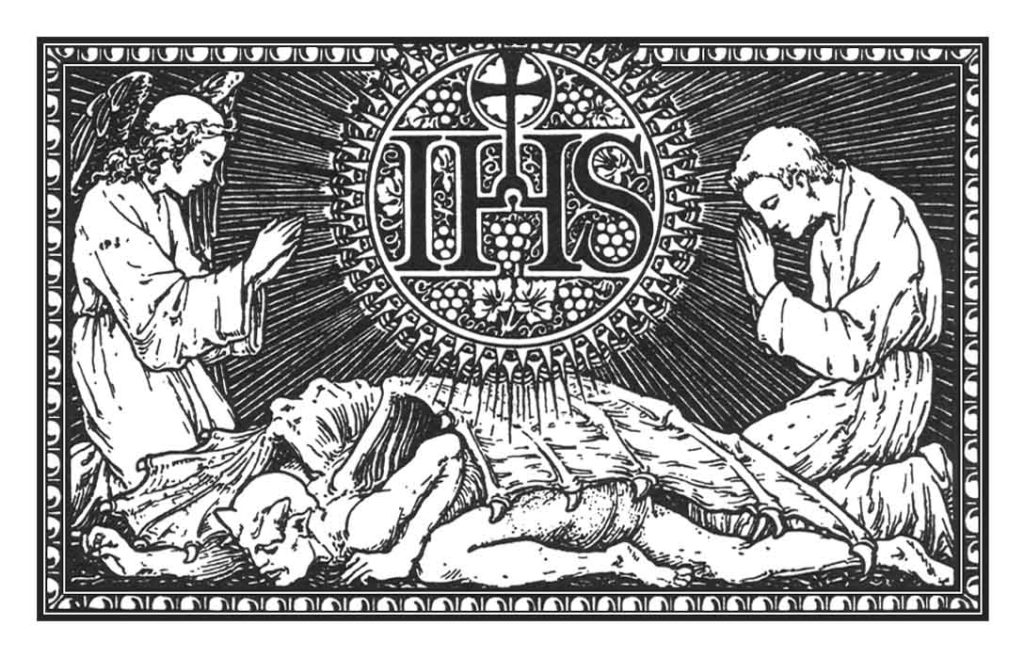
Today is the Feast of the Most Holy Name of Jesus.
The name of God, and as we celebrate today in particular the Most Holy Name of the Second Person of the Triune Godhead, Jesus, should be spoken early and often, but always with complete reverence, and with a head bow, and a doffing of the hat for gentlemen outdoors.
There is a weird trend amongst the uncatechized and the heretical quasi-Christian sects, to adopt “Talmudic Jewish” practices as some sort of a sign of piety. One of the most common is to write “God” as “G-d”. Make no mistake, to do this is to DENY THE INCARNATION AND THUS TO DENY THE TRINITY ITSELF. We say the Holy Name by God’s explicit command:
For anyone who has ever loved another, to hear the name of the beloved person spoken can make the heart fly. And, to hear the beloved speak one’s own name is also a great joy. Such is the case with Jesus Christ, who specifically said, “Greater love than this no man hath, that a man lay down his life for his friends. You are My friends, if you do the things that I command you. I will not now call you servants: for the servant knoweth not what his lord doth. But I have called you friends: because all things whatsoever I have heard of My Father, I have made known to you.”
The Most Holy Name, spoken with complete reverence, is a declaration of love, and not only is all of heaven enraptured by its every utterance, but Our Lord Himself, that font of infinite love for each of us, requited or no, loves to hear those who love Him speak His Name with loving reverence. There it is again – that pesky bit about a “personal relationship with Jesus Christ” that keeps popping up. Funny, that.
Which leads to…
…a few words must be said about taking the Lord’s Name in vain – that is, violating the Second Commandment. It is strange, but thinking back as a child, I had a family member who used Our Lord’s Name – Jesus Christ – constantly as an expression of disgust and contempt, and delivered it with extreme hyper-enunciated gusto. And from the time that I was a teeny, tiny child with absolutely no formal understanding of who Jesus Christ was, I knew that That Name was different and sacred, and that when That Name was said like that, that it was a very bad and scary thing, and that the person who said it was to be avoided. Looking back now at my adult life, I can CLEARLY see that people who used Our Lord’s Name in vain as an expression of disgust should have been immediately rejected by me. It is a classic example of the axiom “where there’s smoke, there’s fire”.
If you want to get your head around what exactly it is that you’re doing when you use His Name as an expression of disgust, simply replace His Name with the name of the non-divine person you love most in the world. Then imagine yourself calling out that person’s name as an expression of disgust. Years ago now, if you remember, I had a chunk of human poop fall on my foot from a toilet brush in a trashed apartment that I was hired to clean. Imagine human poop falling on your foot (Eeeewww!!!) and calling out the name of your most beloved person as an expression of disgust. It’s depraved, right? No one does that. Well, your beloved person isn’t Perfect Good and Infinite Love who hung on a cross and died for your sins, now are they? So how much sicker is it when we do it to God? Yup. There’s a reason why the Second Commandment is the SECOND Commandment.
It is a dead giveaway, folks. A person who uses Our Lord’s name as an expression of disgust, ESPECIALLY in combination with profanity (avoid like the plague anyone who says or uses the expression “OMFG” whether spoken in full or written as an acronym – bad, bad, bad) is a person who A.) probably doesn’t actually believe in Him, NO MATTER WHAT THEIR POSITION, or B.) does believe in Him and hates Him. I have seen both. An example of the latter was a layman who held and to this day holds himself out as a super-Trad Roman Rite and Byzantine liturgical expert, who would frequently yell, “Oh, sweet JESUS!” or “Oh, sweet Baby JESUS!” as his preferred exclamation of extreme disgust, and he turned out to be… wait for it… not just a sodomite, but a sacrilegious sodomite. As in “bedding” seminarians, clerics and prelates, sometimes inside of Basilicas and churches, and then bragging about it in “safe circles”. We’re talking straight-up satanic activity. The signs were all there, first among them the consciously malicious use of the Most Holy Name of Jesus.
So, say Our Lord’s Most Holy Name as often as you can, always with love and reverence. To do so is a declaration of belief in the Personal Triune Godhead, His Incarnation, and belief in His almost too-good-to-be-true words, “You are My friends.” Say His Name with love and let your heart fly at the very sound of it. Say His Name with love and let Him joy in the sound of you, His beloved friend, saying it.
Say His Name, because consider that in these dark days of apostasy in the post-Christian West, Our Lord’s Name is said orders of magnitude more frequently as a curse or expression of disgust than it is in loving reverence. I would guess that just the Irish alone, who are notorious for this terrible sin – they use Our Lord’s name almost as a verbal tick, often in combination with the “f” word – more than equal with their sacrilegious abuse of The Holy Name ALL OTHER UTTERANCES of Our Lord’s Name reverently spoken in the entire world every day. That’s how bad the Irish are, and how bad the world is.
And finally, the Most Holy Name is not only the shortest prayer, but also one of the most powerful:
JESUS.
A reader sends, 4 January ARSH 2026:
Dear Ann,
“And finally, the Most Holy Name is not only the shortest prayer, but also one of the most powerful: JESUS.”
I think your last point is vital. It’s harder to call on Him by name if one has profaned and abused That Name in the past.
So when people swear and curse in this way they’re making it harder for themselves (and possibly for others) to repent of their sins.
T
Nurse Claire is back, she’s pissed, and has a thing or two to say.
Bookmark and daily check warranted.
There are rumors of a Nurse Claire Podcast launching. That wouldn’t be total fire or anything. Nooooooo….. 😁
https://nurseclairesays.com

Feast of the Proto-Passion and the Love of the Law
EIGHT DAYS. It took Him EIGHT DAYS from His birth to shed His Blood for us, and He shed His Blood in testimony to the Law, which is derivative of Himself.
And those few drops of His Blood shed at His Circumcision WERE ENOUGH. Every drop of the God-Man’s Most Precious Blood is in itself an infinity of Mercy. But He went thirty-three years further and all the way to the Pillar and to Calvary. Why? Love. Love of US. Love of YOU, specifically, personally and individually. Pure, infinite gratuitous LOVE.
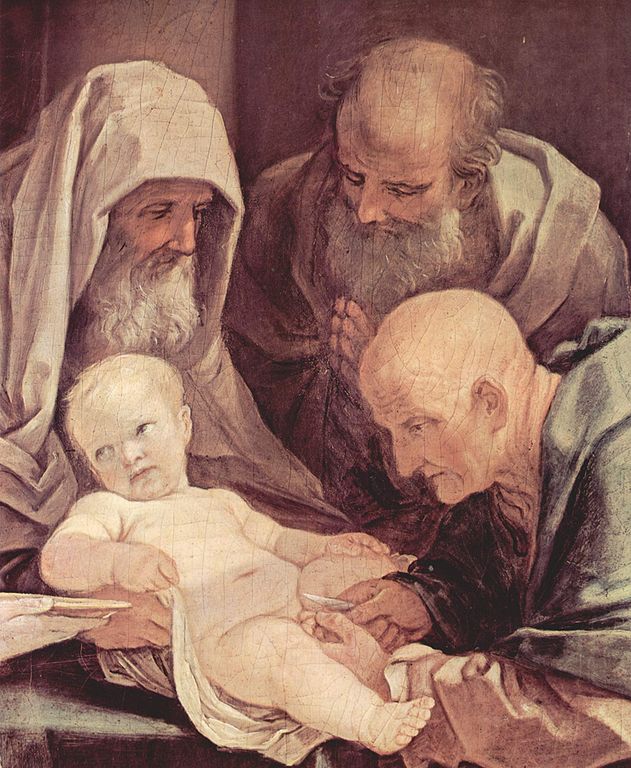
Circumcision of The Lord (detail), Guido Reni, ARSH 1635, Siena
Ponder this, and then ask yourself these questions:
Would Jesus abandon His Church, EVER? No.
Is there hope, or is hope just a lie, a mere platitude for the immature and/or uneducated peasants who simply can’t come to grips with the futility and hopelessness of it all? Of course there is hope. The second of the three theological virtues, which is also the Fruit of the Second Glorious Mystery of the Rosary (the Ascension) can never be a lie, and to say that it is a lie is blasphemy of the highest order.
Is God Almighty hamstrung and defeated by a bunch of reprobate, apostate sodomites and Freemasons? If you think He is, then you don’t know Him very well, if at all.
If God Himself submitted to the Law, does it make sense to say that His Vicar could completely upend Canon Law and only “partially resign”, thus making the Law Itself a violation of the Law of Non-contradiction, that is, both an extant thing and a non-extant thing? Are Canons 188 and 332.2 both Law and NOT Law? Is the entire Code of Canon Law, the Divine Law and the Natural Law both REAL and NOT REAL? Is chaos the Divine Will? If you think that it is, might I recommend that you visit your local mosque. They worship an irrational faux-deity that they claim is pure will, mutable (changeable), capricious, contemptuous and deceitful.
Is Jesus a jerk who is Himself trying to “give us all the shake” and trick us into apostasizing and entering an Anti-church and going to hell, or is His Church and its visible head… VISIBLE? Extremely, stunningly, shockingly VISIBLE? Terribly VISIBLE, like an… eclipse.
He was VISIBLE in life, VISIBLE in death, and now in the ABSENCE, the vacancy, is so clearly VISIBLE.
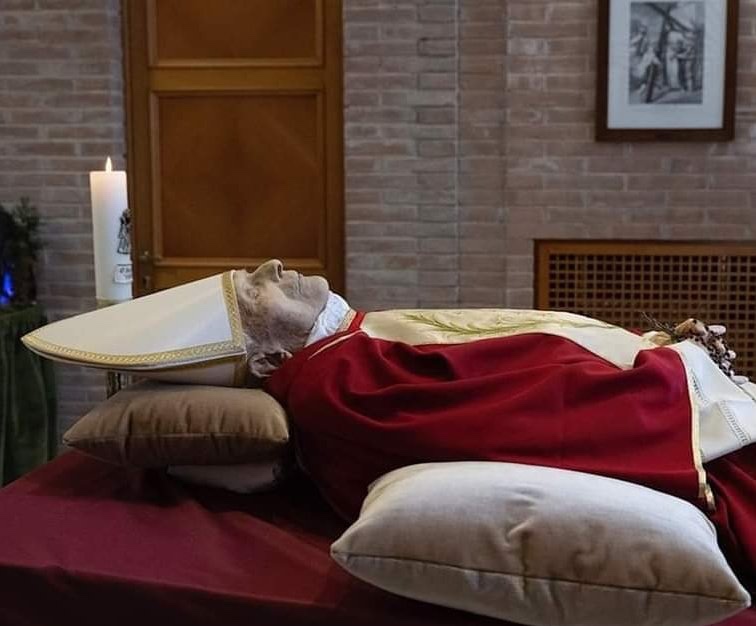
Ponder these things today, on the Feast of the Circumcision.
Happy New Year to one and all.
Pray.
Go to confession.
Pray.
Canon 188, coercion, substantial error, and why Pope Benedict’s death three years ago today makes no difference to the relevance of his invalid attempted partial resignation, and the ongoing urgent need to publicly acknowledge the Antipapacy of Jorge Bergoglio.
LifeSite’s full reportage HERE.
“Pray for me, that I may not flee for fear of the wolves.”
MASS, IMPOSITION OF THE PALLIUM
AND CONFERRAL OF THE FISHERMAN’S RING
FOR THE BEGINNING OF THE PETRINE MINISTRY
OF THE BISHOP OF ROMEHOMILY OF HIS HOLINESS BENEDICT XVI
St. Peter’s Square
Sunday, 24 April 2005
FEAR.
FLEE.
WOLVES.
A resignation made out of grave fear that is inflicted unjustly or out of malice, substantial error, or simony is invalid by the law itself.
-Canon 188
The Pope is bound to Canon Law insomuch as Canon Law is derived from DIVINE AND NATURAL LAW. All three provisions of Canon 188 are derived from Divine and/or Natural Law.
Canon 188: A resignation made out of grave fear that is inflicted unjustly or out of malice, substantial error, or simony is invalid by the law itself.
Okay, just off the top of my head here, Coercionwould be against the Fifth Commandment if it involved any threats of violence of death. It would also be against the Seventh Commandment as a form of stealing; stealing of the Office itself, and possibly stealing of a man’s right to his reputation if threats of detraction are involved (aka blackmail of the guilty). If the coercion is in the form of blackmailing of the innocent, this would be against the Eighth Commandment because it would be bearing false witness.
Substantial Error: Can the Pope make 2+2=5? No. Can the Pope make any number that is not 1 equal to 1? Can the Pope make 2 = 1? Of course not. This is a clear breaking of the Natural Law, of which arithmetic and logic are subsets.
Simony: To accept a bribe or payoff in exchange for attempting to resign the Papacy would be not merely the coveting of money, but is even moreso a sin of IRRELIGION, a sin against the FIRST COMMANDMENT itself because it is the buying and selling of a spiritual thing, namely, in this case, the exercise of an ecclesiastical jurisdiction – the Papacy itself.
Now here is the $64,000 question:
Do you honestly believe that the Pope has the ability to ABROGATE THE TEN COMMANDMENTS and/or THE NATURAL LAW?
If the Law is derivative of GOD HIMSELF, being perfect good, truth and justice, and Jesus Christ EXPLICITLY bound Himself to the Law when He gave Peter the Keys, saying:
And I say to thee: That thou art Peter; and upon this rock I will build My Church, and the gates of hell shall not prevail against it. And I will give to thee the keys of the kingdom of heaven. And whatsoever thou shalt bind upon earth, it shall be bound also in heaven: and whatsoever thou shalt loose upon earth, it shall be loosed also in heaven
Does it make any sense whatsoever that the Pope can override the very ESSENCE of God Himself, namely truth, goodness, justice and RATIONALITY? That the Pope can do that which even God Himself cannot and would not do given that God is pure goodness, truth, love and justice?
If so, then what EXACTLY is the stable base upon which EVERYTHING exists? How can Peter be The Rock if Peter is NOT anchored to The Divine and Natural Laws, which is to say to Christ Himself? If you take away the Earth (God Himself, the Rational Logos) what, exactly is the Rock (Peter) going to sit upon that The Church is then subsequently built upon? If the Divine Law is mutable and overridable, and even the Natural Law can be casually tossed aside (any positive integer greater than 1 can equal 1 if it suits the Pope’s error), then how can God be rational? Is the first verse of St. John’s Gospel, proclaimed at the conclusion of almost every Tridentine Mass, in error? Is Christ NOT the Word, the LOGOS??
Like I said, this all sounds very, very suspiciously like the islamic political system and its irrational, pure will tyrannical satanic fake deity crap. Red flag much?? Maybe worth a rethink?
The Pope is absolutely bound by Canon Law insomuch as a given point of Canon Law is simply a derivative recapitulation of Divine or Natural Law, which Canon 188 is in every particular.
To argue otherwise (if you can even call it that) is madness, and of the Enemy.
The fact that Pope Benedict has been dead for three years, or ANY amount of elapsed time, makes absolutely no difference with regards to the importance of publicly acknowledging the situation. TRUTH HAS NO EXPIRATION DATE.
The statement that could have ended the Bergoglian Antipapacy and now the Prevostian Antipapacy has not changed a single iota with the death of Pope Benedict, because his earthly presence is not required to adjudicate the validity of the juridical act of the putative resignation that he proffered in February ARSH 2013. Only his words and deeds in February ARSH 2013 are legally germane, and we have a thorough record of that. So, we keep up the good fight to have the TRUTH publicly acknowledged. Let it ALL come out.
“Significant Canonical irregularities have been identified with regards to the putative resignation proffered by Pope Benedict XVI in February of 2013. Pending further investigation, a state of emergency suspense is hereby declared.”
I hope this helps.
Love therefore is the fulfilling of the Law.
Plenitudo ergo legis est dilectio.
The Most Beautiful Introit of the Year….
Introit for today’s Mass:
Wisdom 18:14 – 15.
When a profound stillness compassed everything and the night in its swift course was half spent, Your all-powerful Word, O Lord, bounded from heaven’s royal throne.
Ps 92:1
The Lord is King, in splendor robed; robed is the Lord and girt about with strength.
V. Glory be to the Father, and to the Son, and to the Holy Ghost.
R. As it was in the beginning, is now, and ever shall be, world without end. Amen.
When a profound stillness compassed everything and the night in its swift course was half spent, Your all-powerful Word, O Lord, bounded from heaven’s royal throne.
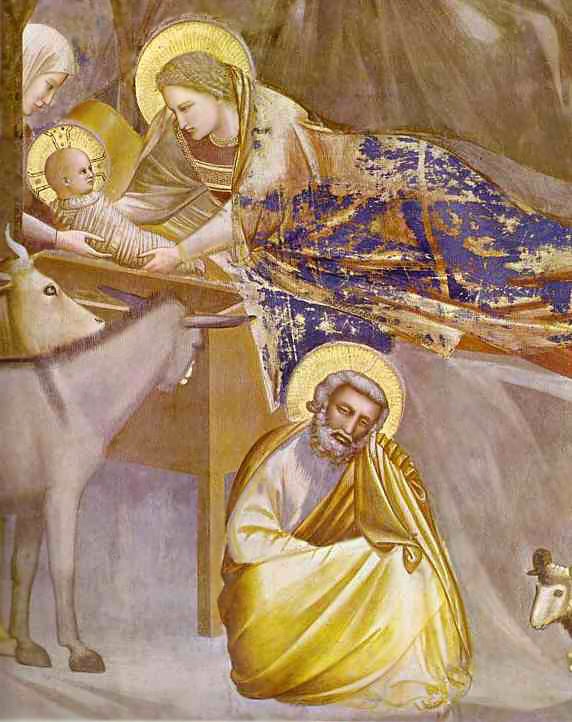
Nativity (detail), Giotto, Scrovegni Chapel, Padua, ARSH 1305.
Christmas Cheer: All Sodomites Died When Our Lord Was Born
(I firmly resolved to NOT have any discussion of sodomy in this space over Christmas, but now it’s time to resume the war. Let’s start with this reminder, which should fill us with great hope and consolation. Let it also remind us – and this is very important for all of us – that up until just recently, sodomy and sodomites were so rare that the very concept was rarely if ever discussed. Many people lived their entire lives never knowing that the sins of Sodom even existed. And yes, every sodomite on earth could have been smote by God without causing any upheaval because there were SO FEW. We MUST remind ourselves that this state of total cultural saturation with sodomy, transvestitism, perversion and sexual depravity is wildly anomalous and in no way normal. Civilization WILL revert to a default baseline chastity, or civilization will cease to exist. The world has cancer: sodomy. Don’t let the enemy convince you that the cancer is normal. -AB ’25)
All Sodomites Died When Our Lord Was Born
In a sermon at the Church of Saint Mary of Porciuncula, St. Bonaventure spoke about the miracles that took place at the very moment of the birth of Our Lord Jesus Christ.
The seventh prodigy was the killing of all sodomites to rid the world of this sin against nature and make it more worthy for the One Who is Purity itself.
This action corresponds to the ire of God when he destroyed Sodom and Gomorrah and projects a serious perspective for modern countries that support homosexuality.
All sodomites, men and women, died all over the earth, as Saint Jerome said commenting on the verse Lux orta est iusto [The light was born for the just] (Ps 96:11). This was to make it clear that He [Jesus Christ] was born to reform nature and to promote chastity.
St. Bonaventure, Sermon 21 – In Nativitate Domini, apud Catolicismo, December 1987, p. 3
Atila S. Guimaraes. Vatican II, Homosexuality and Pedophilia. TIA 2004, pp. 27
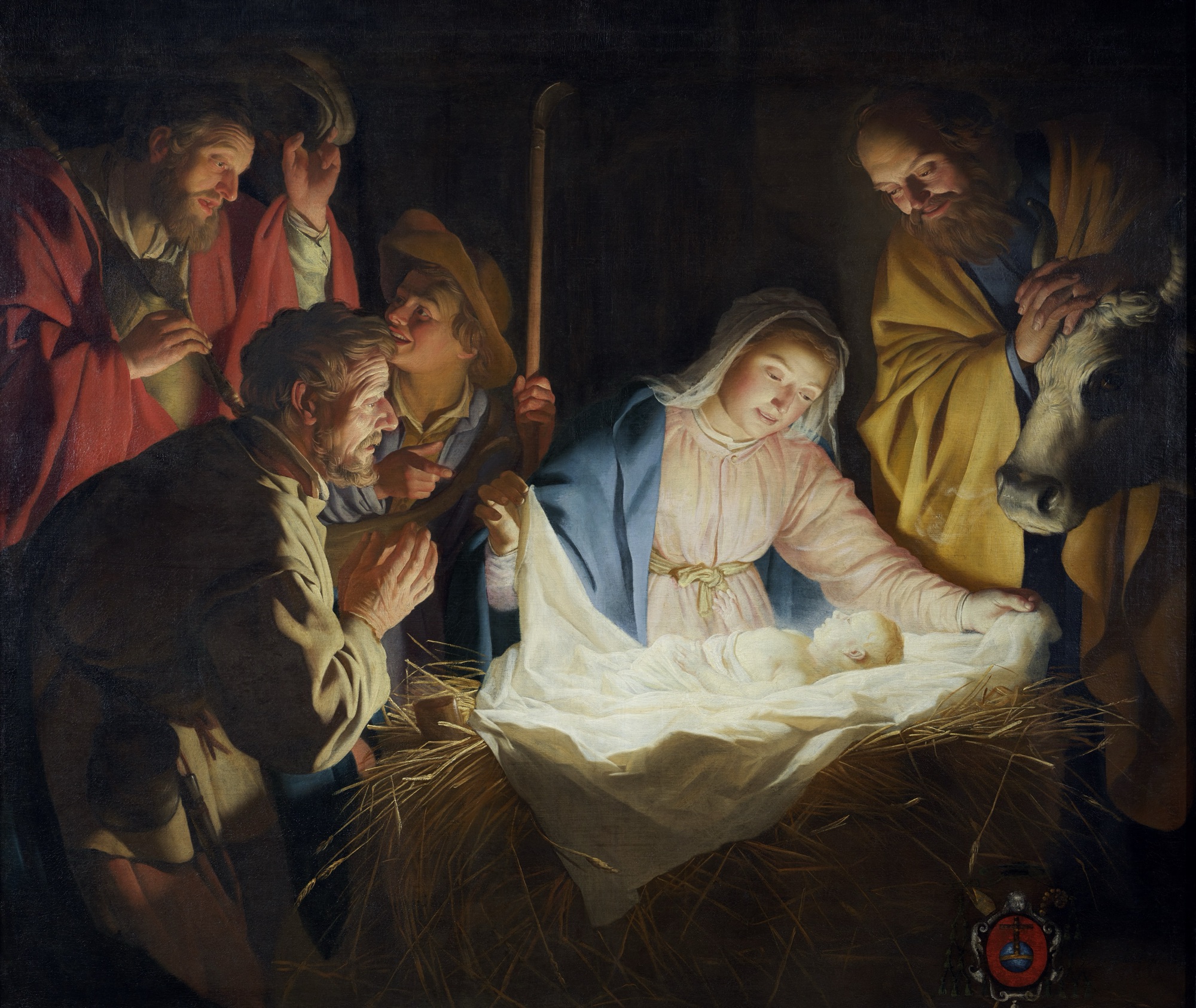
Behold, Purity Itself, incarnate.
Yes, Jesus Christ was born on December 25th, and yes, it matters, and yes, it’s in the Bible.
One of the most egregious forms of arrogance by “modern man” is the notion that no one before the 1500s… or even 1962… had any idea when anything happened, what year it was, what date it was, or had any means of knowing or recording anything. This is laughable in an age when everyone, including small children, walk around with a baby television that gives them complete access to the sum of human knowledge, available to them in their mother tongue or any language they choose, and the vast majority of teenagers in post-Christian North America couldn’t name their eight great-grandparents if you put a gun to their head, and furthermore have exactly zero desire or curiosity to know who they were. Most modern teens have absolutely no idea what their grandmothers’ maiden names were, and quite a few have no idea when their own parents – not grandparents, but PARENTS – were born. Look around you. If anyone is functionally retarded to the point of not even knowing when major events happened, it is us, NOT the people of 2000 years ago, who kept and memorized meticulous genealogies and most assuredly knew when their children were born.
The Blessed Virgin Mary knew EXACTLY when Our Lord was born, and she told the story countless times, no doubt, including to all of the Apostles, most especially St. John and certainly to St. Luke who wrote the Nativity narrative in his Gospel. And yes, St. Luke tells us the date of Our Lord’s Nativity in his gospel when he opens with the narrative of the conception of St. John the Baptist.
Luke 1: Forasmuch as many have taken in hand to set forth in order a narration of the things that have been accomplished among us; According as they have delivered them unto us, who from the beginning were eyewitnesses and ministers of the word: It seemed good to me also, having diligently attained to all things from the beginning, to write to thee in order, most excellent Theophilus, that thou mayest know the verity of those words in which thou hast been instructed. There was in the days of Herod, the king of Judea, a certain priest named Zachary, of the course of Abia; and his wife was of the daughters of Aaron, and her name Elizabeth.
And they were both just before God, walking in all the commandments and justifications of the Lord without blame. 7 And they had no son, for that Elizabeth was barren, and they both were well advanced in years. 8 And it came to pass, when he executed the priestly function in the order of his course before God, 9 According to the custom of the priestly office, it was his lot to offer incense, going into the temple of the Lord. 10 And all the multitude of the people was praying without, at the hour of incense.
(Zachary is on duty in the Temple, going into the Holy of Holies, where the Archangel Gabriel appears to him…)
11 And there appeared to him an angel of the Lord, standing on the right side of the altar of incense. 12 And Zachary seeing him, was troubled, and fear fell upon him. 13 But the angel said to him: Fear not, Zachary, for thy prayer is heard; and thy wife Elizabeth shall bear thee a son, and thou shalt call his name John.
(…)
And the people were waiting for Zachary; and they wondered that he tarried so long in the temple. 22 And when he came out, he could not speak to them: and they understood that he had seen a vision in the temple. And he made signs to them, and remained dumb. 23 And it came to pass, after the days of his office were accomplished, he departed to his own house. 24 And after those days, Elizabeth his wife conceived, and hid herself five months, saying: 25 Thus hath the Lord dealt with me in the days wherein he hath had regard to take away my reproach among men.

Now I’ll blockquote a website with the exact details of the date of Zachary’s Temple service:
https://www.dec25th.info/Preisty%20Courses%20Explained.html
“…the priestly rotations were framed within a 24-year cycle, originally set in motion by Solomon and renewed by Ezra, which commenced the Sabbath on or next before Tishri 1 (I Kings 8:2; II Chrn. 5:3; Ezra 7:1).[5] Each course served one week twice annually, plus such additional weeks necessary to fill out the year, coming in the evening of the Sabbath (Friday) and going out the evening of the Sabbath (Friday) following.[6] Assuming each course advanced annually to the next station or week in the calendar, the cycle of priestly ministration would be completed in 24 years, at which point it would begin anew.[7]
Rabbinic tradition placing Jehoiarib on service when the temple was destroyed allows us to identify the station in the twenty-four-year cycle. From there we can find when the cycle began. Then, by reckoning backward in twenty-four-year increments to the course preceding the conception of John the Baptist in 3 B.C., we can putatively identify the week and month Zachariah was serving. The number of steps from the first station of Jehoiarib’s second ministration (for the first does not reach so far) to the week of Ab 9 is twenty-one stations. Thus, A.D. 70 was the twenty-first year in the twenty-four-year cycle. To return to the beginning of the cycle we subtract twenty years from A.D. 70, which brings us to A.D. 50. Subtracting twenty-four more years brings us to A.D. 26; this course would therefore have consisted of the years A.D. 26-49. Twenty-four more years brings us to A.D. 2; this course would have consisted of the years A.D. 2-25. 24 years more bring us to 23 B.C. (there was no year zero). This course would have consisted of the years 23 B.C. to 1 A.D.
Counting forward from 23 B.C. to 3 B.C. when John was conceived shows that the course of Abijah would have been serving at its twenty-first station when Gabriel appeared to Zachariah (23 B.C. to 3 B.C. = 21). Assuming Zachariah’s course was in its second ministration, this would mean he was on duty approximately the week of Elul 28-Tishri 5 (Sept. 8-14). We do not know how long after Zachariah’s ministration his wife conceived. Human fertility cycles run about 28 days, during which a woman is fertile only about 7. If we allow that Elizabeth conceived the second week after Zechariah returned home, this would place conception in the week of Tishri 13-19 (Sept. 22-28). Normal human gestation is 38 weeks. A 38-week gestation would place John’s birth the week of Tammuz 21-27 (June 20-26), 2 B.C. Based on statements in Luke, John was about six months older than our Lord (Lk. 1:36, 56). Six months is 26 weeks. Twenty-six weeks from John’s birth brings us to Tebet 25-Shebat 2, which answers to the week of December 22-28.“
The date of Christmas is the date of Our Lord’s birth. Today is truly the birthday of Jesus Christ. Don’t believe the satanic propaganda that Christmas is just a re-branded pagan festival. The Church has known from day one exactly when Our Lord was born, because The Blessed Virgin Mary, Co-redemptrix, Mediatrix of all Graces, and Queen of Heaven and Earth is also Mother of the Church, and, the Mother of God. She knew when He was born, and she TOLD everyone when he was born, and St. Luke cited it in reference to St. Zachary’s conversation with Gabriel inside the Holy of Holies in September of 3 B.C. John the Baptist was conceived a few weeks later, and Our Lord was conceived six months later on 25 March, John the Baptist was born on the 24th of June, and Our Lord on December 25th, 15 1/2 months after Gabriel and Zachary’s talk, during his Temple Service in the Second Ministration of the Course of Abijah. Just as St. Luke said in his Gospel.
Happy Birthday, Sweet Lord Jesus, King and God and Sacrifice.
Be near me, Lord Jesus, I ask Thee to stay,
Close by me forever, and love me, I pray.
Bless all the dear children in Thy tender care,
And take us to heaven to live with Thee there.

